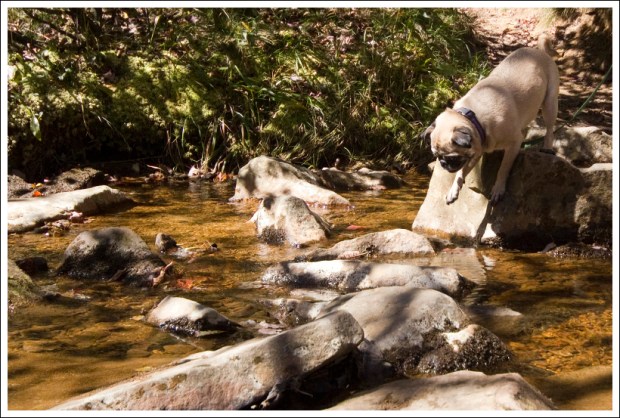This 10-mile loop could easily be a day hike, but we chose to do it as a short overnight backpacking trip. The route has some fairly nice vistas and there are a couple campsites near the summit.
View the Full Album of Photos From This Hike

Adam Says: Day One (4.7 miles)
This past year was not a good year for our backpacking hobby. The rain seemed endless and the amount of exceedingly heavy rain did a lot of damage to trails. We also got a new puppy in March. He needed a lot of training and we weren’t quite ready to trust him to someone else for long periods of time.
We did manage to get out for this one trip in August 2018. Halfmoon Mountain had been a trail we had looked at doing for many years. We heard there were great views and a sweet campsite with a view at the top. One thing that hurts this as a backpacking loop is the nearest water source to the top is about 1-1.5 miles away from the camp areas, so you have to haul what water you need to the top.

We started the trip by parking along Trout Run Road (see GPS coordinates below). We started off on the Bucktail Trail and shortly walked through a gate blocking off the fire road. After a short distance, we came to a junction where the Bucktail Connector Trail branched off to the right while the Bucktail Trail takes a left (this is your return trip for the loop). We took the right Bucktail Connector Trail which has pinkish-purple blazes to follow this loop counter-clockwise. The trail began to climb up through forested terrain. Overall, this trail was well-maintained as it is a visible, narrow footpath cutting through the forest. There isn’t a ton to say about this section since there wasn’t a lot to see other than forest around you. The trail climbs for about the first 1.25 miles before descending slightly for about .5 miles and then there is another up and down until you reach another junction at 2.5 miles. There is a very nice campsite along the stream near this junction.
At the junction take a left on to the Halfmoon Trail (going right would take you to the Halfmoon parking area – where many hikers originate on a shorter out-and-back route to the summit). From here, the trail gets steeper and at the 3.5 mile mark, you reach the junction with the Halfmoon Lookout Trail, which takes off from the left. Take that left on to the Halfmoon Lookout Trail to reach the summit after another .8 miles. On our way up to the Halfmoon Lookout, we noticed a small footpath that branched off to the left which led to a larger camp area where we ultimately camped for the night. The last tenth of a mile is a steep rock scramble to the top. With crumbling rock underfoot, you really have to watch your step. At the top, there are two great viewpoints. The first you come across on the lefthand side of the trail and there is room for a few people at the top. There are remains of an old firetower at this lookout spot.
To visit second viewpoint, you descend through a campsite in a saddle and then over another rock scramble to to the view. This view spot will typically only work for about two people. It’s tight quarters.

We initially were going to camp at the top – we heard it was a great campsite. Some jerks had chopped down some live trees to build the frame of a lean-to (so much for Leave No Trace principles) on the campsite. We deconstructed the lean-to and tried to clear out the area a bit, but felt the campsite would have been a bit tight and we would have had people walking through our campsite all day to get to the second viewpoint. We decided to enjoy the views up here and then make our way back down. Investigating that side trail, we found a great spot to set up camp. Even better, the campsite below the saddle had its own little viewpoint for us to enjoy. We found a nice grassy spot to set up our tent on some flat ground. The bugs were a little hard to deal with at camp, but we made the best of it. We were later joined by another couple that shared our camping area.

After we set up camp, we made our way back to the top to enjoy some late afternoon/sunset views. At the second view, another couple had set up a hammock somewhat precariously over the edge – a nice spot, but it did obstruct the views for anyone else. We had a nice dinner back at our campsite and settled down for the evening enjoying the sounds of the forest.
Christine Says: Day Two (5.3 miles)
I woke up early on the second day, so I could watch the sunrise. There were a couple decent places to catch the sun coming up – the small outcropping at our campsite and a spot about halfway up the scramble to the summit of Halfmoon. Both vistas were a bit obstructed, but I was still able to capture some pretty morning color in the sky. The day was already warming, so we ate breakfast and packed up quickly.

We made our way back down the Halfmoon Lookout Trail for several tenths of a mile to its junction with the German Wilson Trail. I don’t know what color I’d call the blazes on German Wilson Trail – purplish? fuchsia? magenta? Something like that, I suppose. The German Wilson Trail descended very steeply over loose, rocky terrain. It wasn’t fun and I was very glad we had decided to hike the loop counter-clockwise and didn’t have to ascend this tough section of trail with full packs. The trail drops steadily for about a mile before coming to a grassy area with a shallow stream.
Look for a forest service gate to the left. You should see the orange blazes of the Bucktail Trail. The trail that continues toward the right is the Old Mine Trail – do not take this trail. Follow the Bucktail Trail, crossing the stream multiple times over the next .8 mile. When we hiked in August 2018, this section of the trail was in terrible shape. Big sections were washed out and we had to navigate by following sparse orange blazes. Lots of sections of footbed were completely disappeared by debris and erosion. Hopefully some trail maintenance has been done over the last eight months.
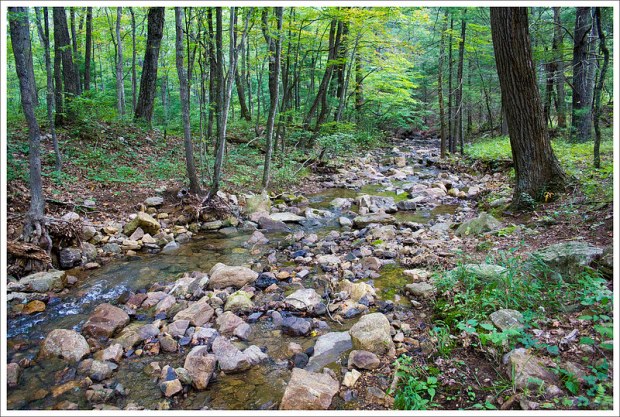
At 2.2 miles, you’ll come to a junction with the Cacapon Trail. That trail follows a small footbridge over the stream on the right. Stay to the left and continue following the orange blazed Bucktail Trail. At this point, the trail becomes wide and grassy. It also begins to ascend again. This climb wasn’t difficult, but the grass was pretty overgrown and there was a lot of direct sun/heat. I also saw a ton of poison ivy mixing in with the grass. The climb felt worse than the numbers make it look.
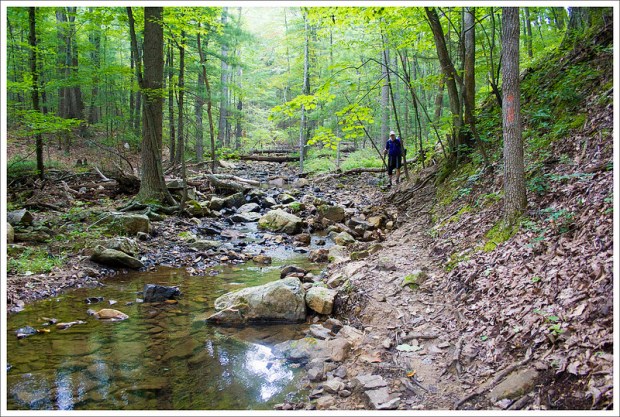
The last three miles on the Bucktail Trail were pretty dull. It was basically a trudge along a grassy roadbed back to the parking area. All in all, this hike didn’t really live up to my expectations. It was nice to get out after such a long backpacking drought, but this trail definitely is not destined to become a favorite. If I were to hike it again, I think I’d park at the Halfmoon Mountain parking area and just do this as a seven mile, out-and-back dayhike.
We got back to the car by late morning, so we decided to get some lunch and a cold beer before heading home.
Trail Notes
- Distance – 10 miles
- Elevation Change – Day One: 1545 feet, Day Two: 477 feet
- Difficulty – 3. This was a fairly easy backpacking route. The first day has about a mile of serious climbing, but the rest is very gradual. The second day has a steep, rocky mile of downhill, followed by a bunch of stream crossings, and then a moderate climb along a forest road before gently descending back to the parking area.
- Trail Conditions – 3. The trail was in decent condition for national forest. The first day along the Bucktail Cutoff and Halfmoon Mountain Trail was excellent. The second day had rougher trail conditions: the steep descent when you first turn onto the German Wilson trail had lots of loose softball to football sized rocks and was a bit challenging to walk on, there was a trail washout near the final stream crossing on the Bucktail Trail, and the road portion of the Bucktail Trail had loads of tall grass and poison ivy.
- Views – 3. There are several vistas at and near the summit of Halfmoon Mountain, however they are all small and partially obstructed.
- Streams/Waterfalls – 3. There are nice streams on both day one and two, but the closest water source to the summit campsites is about 1 – 1.5 miles downtrail. In drier times, I expect campers might have to walk up to 2.5 miles down from the summit for water.
- Wildlife – 3. We saw several deer and had a whippoorwill at camp.
- Ease to Navigate – 2.5. The trail has spotty blazing and intermittent trail signs. Blazes are not equally distributed for hikers headed in both directions, sometimes we had to look back to check for blazes to make sure we were on the same trail. There are some trail washouts on the Bucktail Trail that make navigating the stream crossings a little tricky. Also, many blazes are faded and painted in inconsistent colors (for example – the orange Bucktail Trail blazes were often closer to red).
- Solitude – 2. There is one small campsite and one large campsite near the summit. We had to share the large campsite with another hiking party. There was also a steady stream of dayhikers visiting this peak.
Maps




Directions to trailhead: Parking coordinates are 39.01431, -78.66388. The parking area is at the top of a gravel loop right off Trout Run Rd. The sign along the road will be for the Bucktail Trail. Do not park at the lot labeled Halfmoon Trail – that is the 7-mile out-and-back route, rather than the loop outlined here.



























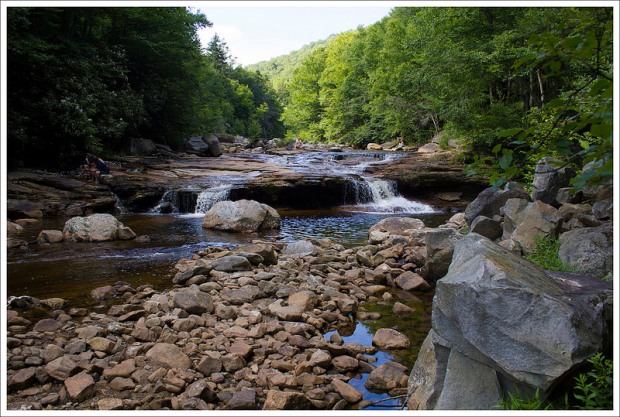



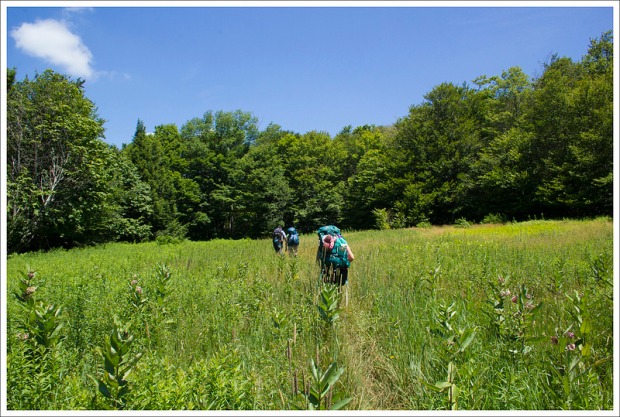







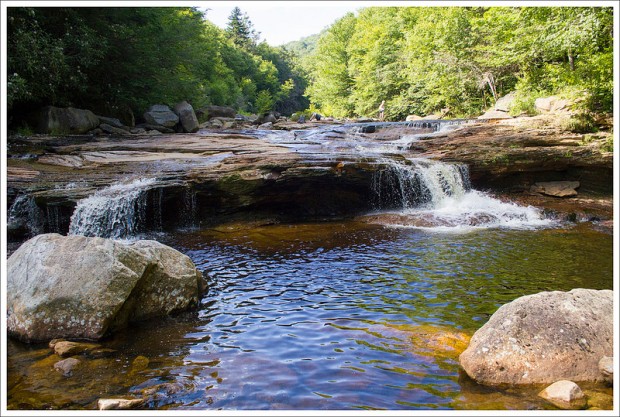






















































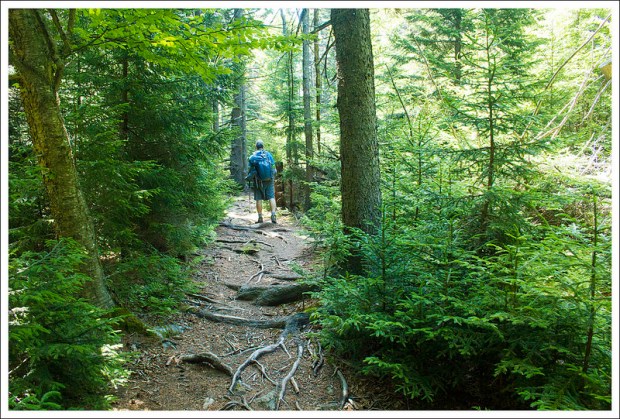





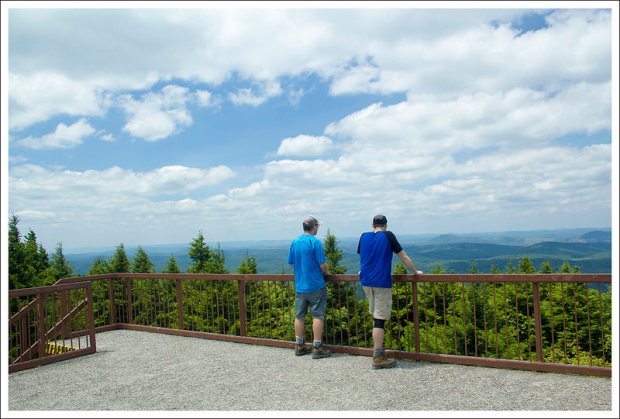




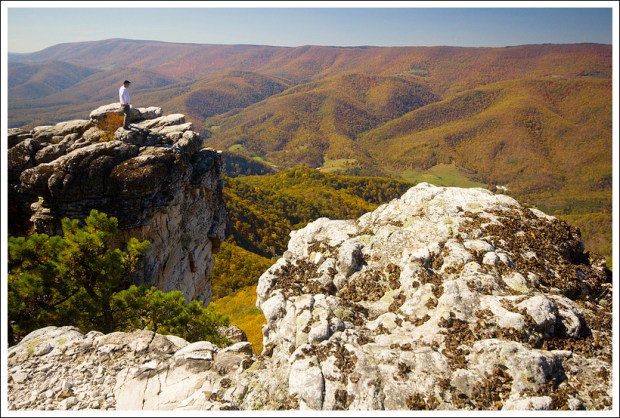


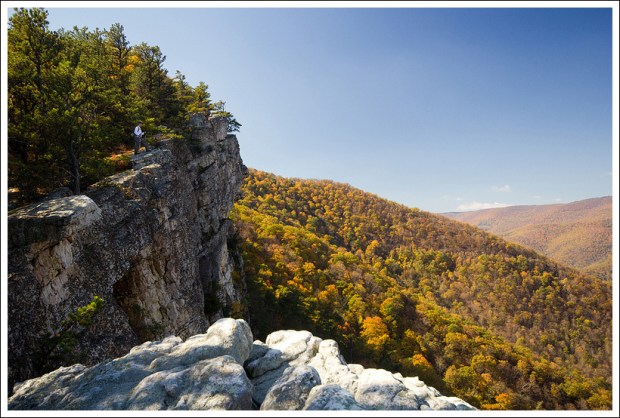

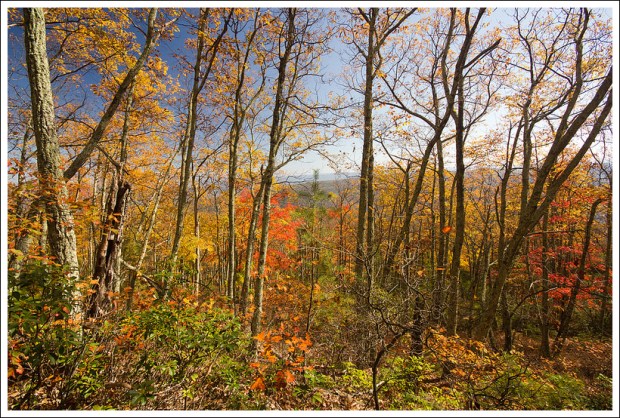


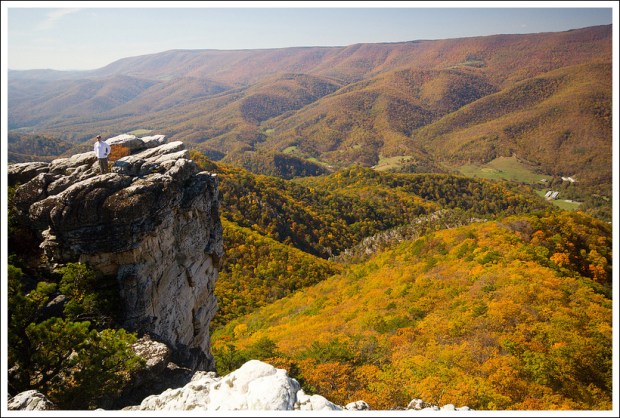


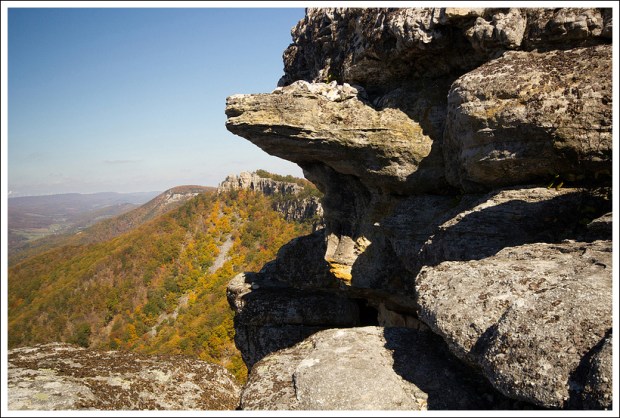










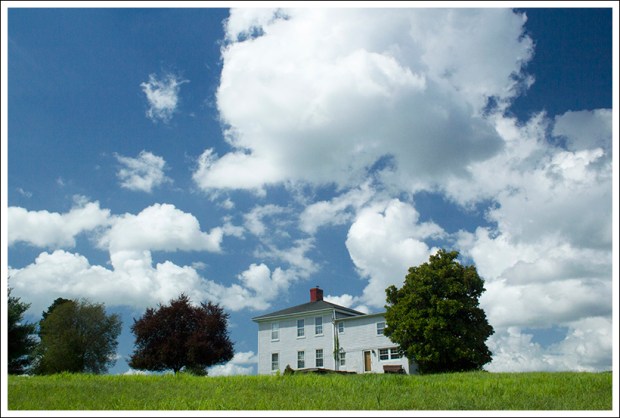











































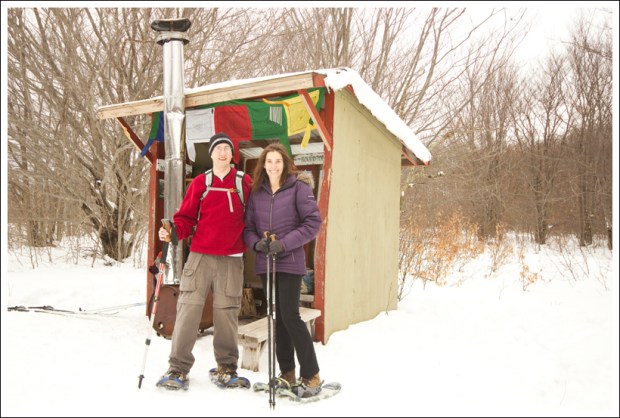






























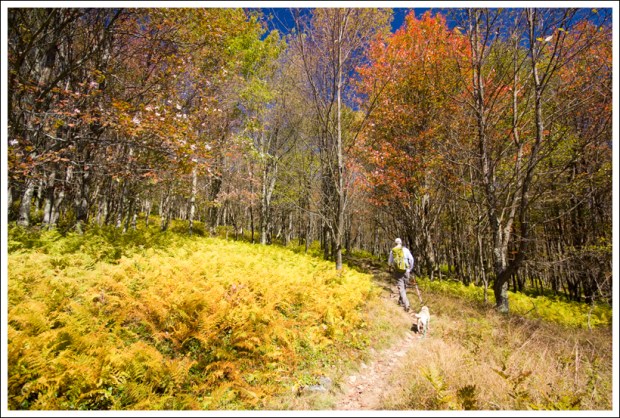



 Wookie Says…
Wookie Says…